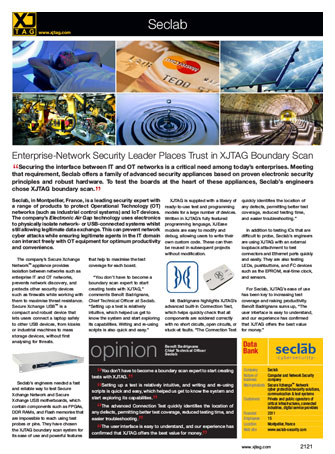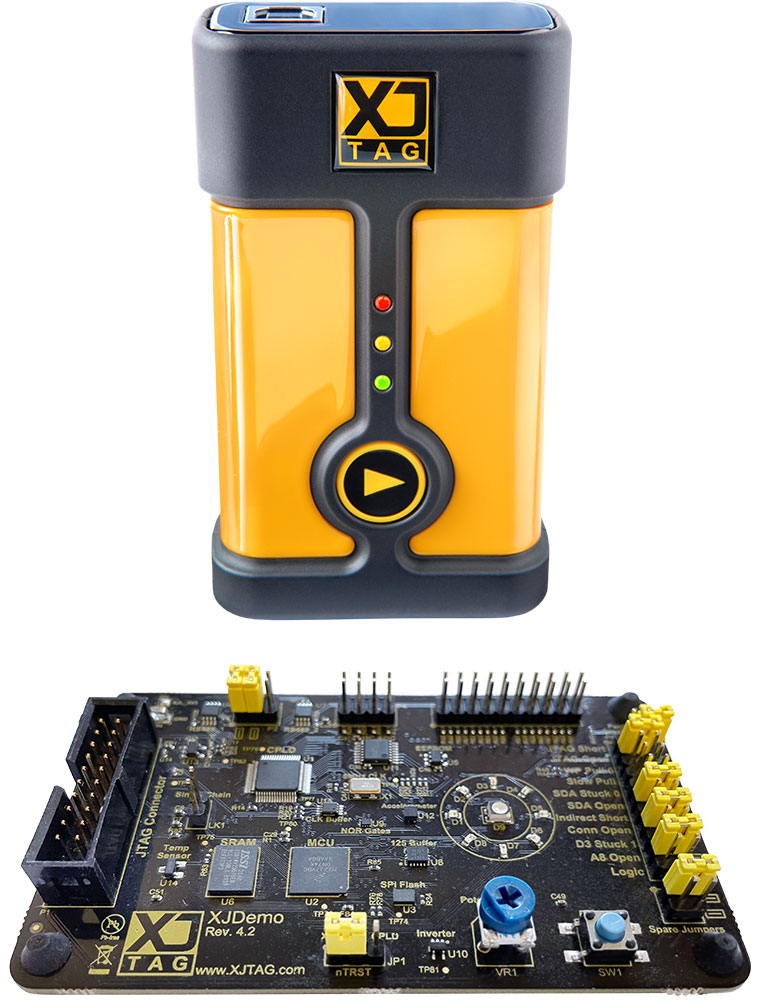
Enterprise-Network Security Leader Places Trust in XJTAG Boundary Scan
Securing the interface between IT and OT networks is a critical need among today’s enterprises. Meeting that requirement, Seclab offers a family of advanced security appliances based on proven electronic security principles and robust hardware. To test the boards at the heart of these appliances, Seclab’s engineers chose XJTAG boundary scan.
Seclab, in Montpellier, France, is a leading security expert with a range of products to protect Operational Technology (OT) networks (such as industrial control systems) and IoT devices. The company’s Electronic Air Gap technology uses electronics to physically isolate network- or USB-connected systems whilst still allowing legitimate data exchange. This can prevent network cyber attacks while ensuring legitimate agents in the IT domain can interact freely with OT equipment for optimum productivity and convenience.
The company’s Secure Xchange Network™ appliance provides isolation between networks such as enterprise IT and OT networks, prevents network discovery, and protects other security devices such as firewalls while working with them to maximise threat resistance. Secure Xchange USB™ is a compact and robust device that lets users connect a laptop safely to other USB devices, from kiosks or industrial machines to mass storage devices, without first analysing for threats.
Seclab’s engineers needed a fast and reliable way to test Secure Xchange Network and Secure Xchange USB motherboards, which contain components such as FPGAs, DDR RAMs, and Flash memories that are impossible to reach using test probes or pins. They have chosen the XJTAG boundary scan system for its ease of use and powerful features that help to maximise the test coverage for each board.
“You don’t have to become a boundary scan expert to start creating tests with XJTAG,” comments Benoît Badrignans, Chief Technical Officer at Seclab. “Setting up a test is relatively intuitive, which helped us get to know the system and start exploring its capabilities. Writing and re-using scripts is also quick and easy.”
XJTAG is supplied with a library of ready-to-use test and programming models for a large number of devices. Written in XJTAG’s fully featured programming language, XJEase models are easy to modify and debug, allowing users to write their own custom code. These can then be reused in subsequent projects without modification.
Mr. Badrignans highlights XJTAG’s advanced built-in Connection Test, which helps quickly check that all components are soldered correctly with no short circuits, open circuits, or stuck-at faults. “The Connection Test quickly identifies the location of any defects, permitting better test coverage, reduced testing time, and easier troubleshooting.”
In addition to testing ICs that are difficult to probe, Seclab’s engineers are using XJTAG with an external loopback attachment to test connectors and Ethernet ports quickly and easily. They are also testing LEDs, pushbuttons, and I2C devices such as the EPROM, real-time clock, and sensors.
For Seclab, XJTAG’s ease of use has been key to increasing test coverage and raising productivity. Benoît Badrignans sums up, “The user interface is easy to understand, and our experience has confirmed that XJTAG offers the best value for money.”

You don’t have to become a boundary scan expert to start creating tests with XJTAG.
Setting up a test is relatively intuitive, and writing and re-using scripts is quick and easy, which helped us get to know the system and start exploring its capabilities.
The advanced Connection Test quickly identifies the location of any defects, permitting better test coverage, reduced testing time, and easier troubleshooting.
The user interface is easy to understand, and our experience has confirmed that XJTAG offers the best value for money.

Company: Seclab
Nature of business: Computer and Network Security company
Main products:
Secure Xchange™ Network cyber protection/security solutions, communication & test systems
Customers:
Private and public operators of critical infrastructures, connected industries, digital service providers
Founded: 2011
Employees: 15
Location: Montpellier, France
Web site: www.seclab-security.com

Configure your products














